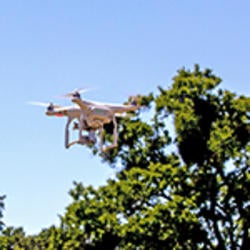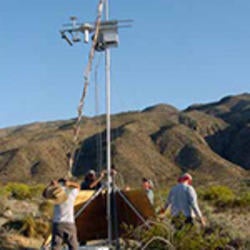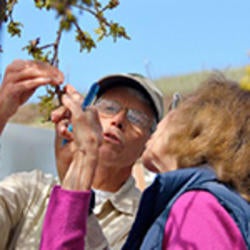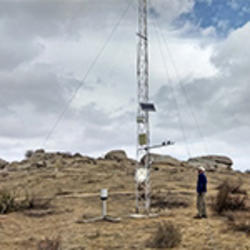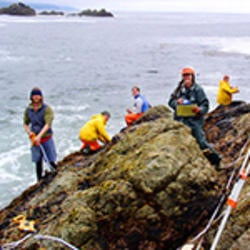NRS reserves span a north-to-south distance of 800 km (500 miles), and an east-to-west distance of 760 km (470 miles). The vast reach of the system enables researchers to compare species and conditions in one portion of the state with those of another, at a spatial magnitude relevant to entire ecosystems. For this reason, a number of major research projects involve transects featuring multiple NRS reserves.
California Heartbeat Initiative • CHI
Using next-generation remote sensing technologies, the California Heartbeat Initiative tracks the pulse of water through state wildlands. The project will correlate plant reactions to climate conditions, enabling scientists to monitor the water status of ecosystems on a landscape scale. The information can be used to produce forecasts of environmental health.
Institute for the Study of Ecological and Evolutionary Climate Impacts • ISEECI
A platform for synthesizing past, current and future environmental change research, and for understanding and potentially mitigating future climate impacts, leveraging the UC Natural Reserve System as a biologically and geographically diverse laboratory; 24 reserves.
California Phenology Project
A project tracking the dates of life stage events (leaf out, flowering, etc.) in selected native plant species to observe the impact of climate change on natural communities; more than 100 sites monitored at eight reserves.
NRS Climate Monitoring Network
Replicate, high-precision climate station equipment using identical data collection protocols provides data to reserve users; 26 stations at 22 reserves.
Partnership for Interdisciplinary Studies of Coastal Oceans • PISCO
Large-scale, integrated studies of the coastal ocean, rocky intertidal, and kelp forest ecosystems of the U.S. West Coast designed to obtain a comprehensive understanding of how these systems function; seven reserves.

